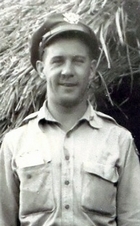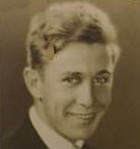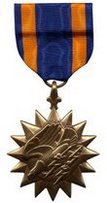Robert Hale
| Date and Place of Birth: | December 11, 1915 Natick, MA |
| Date and Place of Death: | October 24, 1943 Rabaul, New Guinea |
| Baseball Experience: | Semi-Pro |
| Position: | Pitcher |
| Rank: | Second Lieutenant |
| Military Unit: | 8th Bomb Squadron, 3rd Bomb Group USAAF |
| Area Served: | Pacific Theater of Operations |
"I often wondered whether he would be a pilot or a
baseball player when he got out of the service"
Barbara Collins
Robert L. Hale was born in Natick, Massachusetts on December 11, 1915. He attended
Natick High School where he captained the football team in 1932.
Hale's family moved to Rowley, Massachusetts during his teenage years
and he attended Cushing Academy, a prep school in Ashburnham, where he
starred in baseball, basketball and football. Hale scored a touchdown in
a game against Williston Academy which earned him a kiss from film star
and Cushing alumna Bette Davis. "My brother was very shy," explained
Hale's brother, Barbara Collins, in an interview with Newburyport
Daily News writer Victor Tine in 2009. "He ran into the locker room
to get away, but they made him come out."
Hale went on to Holy Cross College in Worcester and Rhode Island
State College (now the University of Rhode Island) where he continued to
be an athletic star. A hard-throwing left-handed pitcher, Hale played
some semi-pro baseball along the way and was a standout with the Rowley
Rams.
Robert Hale entered military service in 1942 and trained as a bomber
pilot with the Army Air Force. He was commissioned a second lieutenant
at Blytheville Advanced Flying School in Arkansas in January 1943, and
was stationed in South Carolina at Greenville and Columbia.
Second Lieutenant Hale was sent to the Pacific as a squadron leader with
the 8th Bomb Squadron, 3rd Bomb Group in July 1943 and began flying
combat missions in a North American B-25 Mitchell the following month.
On October 24, 1943, Robert Hale was co-pilot on a bombing run against
Japanese targets at Rabaul in New Guinea. With First Lieutenant Robert
Miller at the controls and crew members Joseph Berube and Glendon Harris
on board, they took off from Oro Bay Airfield but were attacked by
Japanese fighters on the way to the target. Witnesses in the bombing
formation saw Hale's plane hit. The right wing came off and the plane
crashed on the island. There were no survivors.
Japanese occupation of the crash site area continued for a further two
years, but in 1946, Australian war graves teams located a crash site
with partial remains which they believed to be American. These
unidentified remains were buried at an American Cemetery in New Guinea
in September 1947. These remains were exhumed in 1949 and reburied,
still as unknowns, at Manila American Cemetery at Fort Bonifacio in the
Philippines.
Fifty years later, the Joint POW/MIA Accounting Command (JPAC), which
investigates and recovers Americans killed in past conflicts, was
investigating crash sites in New Guinea when they found the site where
Hale's B-25 had crashed in 1943. A careful excavation of the area
uncovered further human remains and these were sent to the agency's
Central Identification Laboratory in Hawaii. The remains buried in the
Philippines were then exhumed and sent to Hawaii where, with DNA samples
from surviving family members, identification of the four fliers finally
confirmed in May 2006.
With Robert Hale's remains now identified, the Army gave the family the
option of having him buried at Arlington National Cemetery, but the
family chose to have him buried in the family plot in Main Street
Cemetery in Rowley. "I can't really take in the fact that they found his
remains after 63 years," said Barbara Collins. "I'm very, very happy."
78,000 service personnel from World War II are still classified as
missing.
Some of the information contained in this biography was obtained from
Victor Tine's article for the Newburyport Daily News.
Date Added June 4, 2012 Updated July 11, 2013
Baseball's Greatest Sacrifice is associated with Baseball Almanac
Baseball's Greatest Sacrifice is proud to be sponsored by




